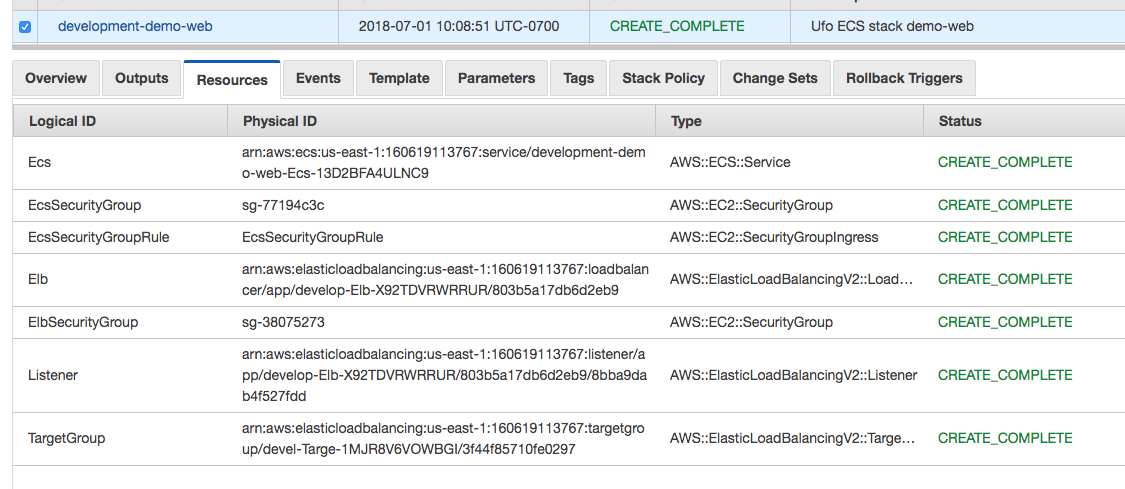Why CloudFormation
Version 3 of ufo was a simpler implementation and did not make use of CloudFormation to create the ECS service. In version 4, ufo uses CloudFormation to create the ECS Service. This is because ufo became more powerful. Notably, support for Load Balancers was added. With this power, also came added complexity. So the complexity was push onto CloudFormation. Hence, ECS service is implemented as CloudFormation resource in version 4.
My gut was already telling me that with Load Balancer support, the “orchestration” or sequencing logic in ufo would become annoyingly complex and shifting it to CloudFormation would be worth it. Nevertheless, I took the time with quick experimental branch and added Load Balancer support using the aws-sdk directly without CloudFormation.
The pull request for that code is here ufo/pull/42. An additional tool was created for the non-CloudFormation approach called balancer. Balancer is a standalone tool used to create load balancers consistently with “profile” files.
- ufo/pull/42 - PR for non-CloudFormation. Closed and not used.
- ufo/pull/43 - PR for CloudFormation. Merged and used.
The results of the exercise confirm my gut. Though the CloudFormation implementation requires more upfront investment, it ultimately pays off. For example, route53 DNS support was added to ufo easily and quickly. Sometimes the learning curve of CloudFormation can be a deterrent, so I hope that these thoughts help.
You can check the resources created with CloudFormation by clicking on the stack name of in the CloudFormation console.

Pro tip: Use the <- and -> arrow keys to move back and forward.
Edit this page
See a typo or an error? You can improve this page. This website is available on GitHub and contributions are encouraged and welcomed. We love pull requests from you!
- Suggest an edit to this page (here's the contributing guide).
- Open an issue about this page to report a problem.